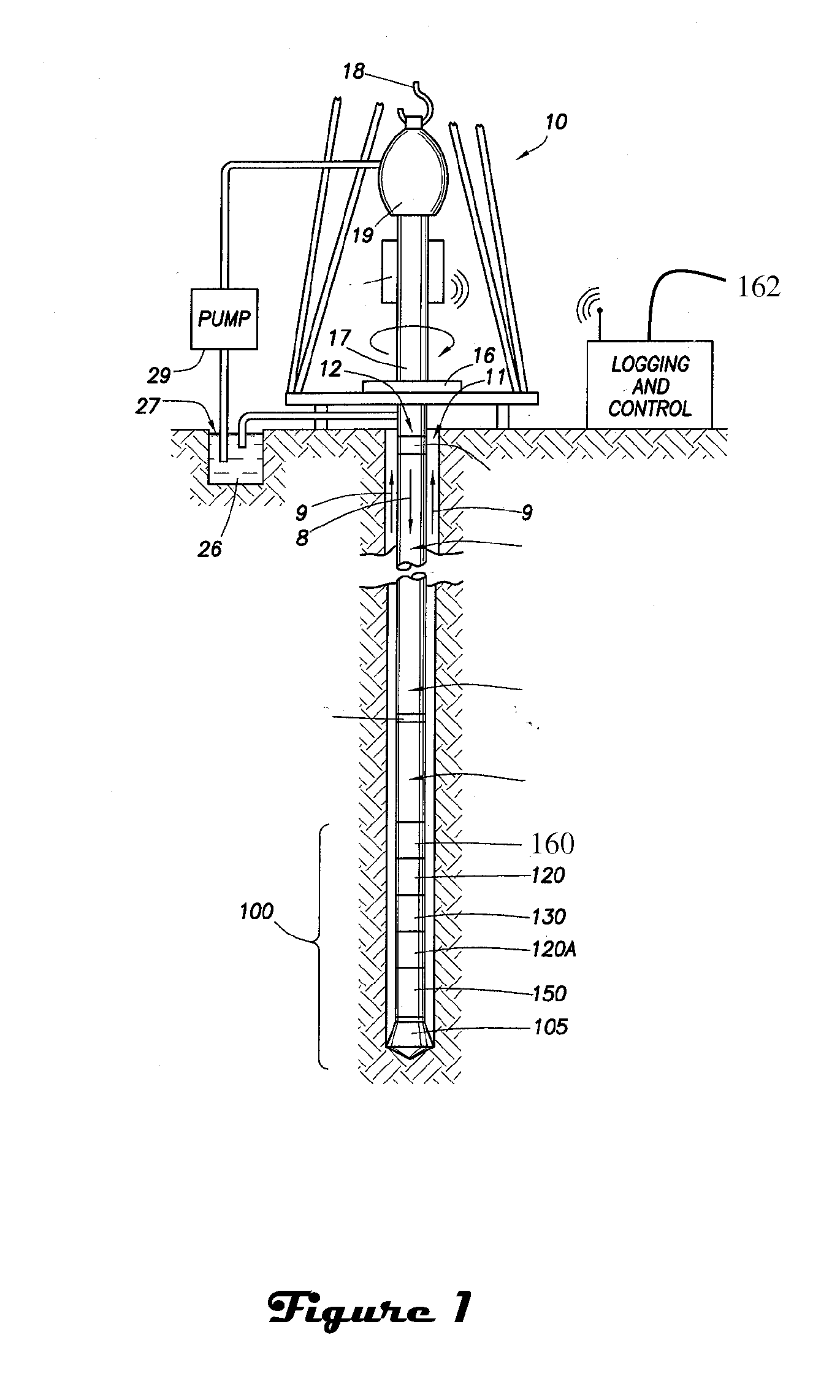Electromagnetic device having compact flux paths for harvesting energy from vibrations
a technology of electromagnetic devices and flux paths, which is applied in the field of electromagnetic devices having compact flux paths for harvesting energy from vibrations, can solve the problems of limited equipment operation distance, small available volume in borehole environment, and limited energy storage capacity of batteries having relatively large storage capacity, so as to improve the coupling of energy, enhance the compactness of the path traversed, and enhance the flexibility of the adapting device form factor
- Summary
- Abstract
- Description
- Claims
- Application Information
AI Technical Summary
Benefits of technology
Problems solved by technology
Method used
Image
Examples
Embodiment Construction
[0020]The particulars described herein are for purposes of discussion of the illustrated embodiments of the present invention in order to provide what is believed to be a useful and readily understood description of the principles and conceptual aspects of the invention. No attempt is made to show structural aspects of the invention in more detail than is necessary for a fundamental understanding of the invention. The invention may be implemented in various different embodiments of a device for converting kinetic energy from the surrounding environment into electrical energy. The embodiments are described below in the context of the source of kinetic energy being vibrations of a drilling tool such as those associated with drilling oil wells. However, the invention is not limited to petrochemical wells.
[0021]FIG. 1 illustrates a wellsite system in which the present invention can be employed. The wellsite can be onshore or offshore. In this exemplary system, a borehole (11) is formed ...
PUM
 Login to View More
Login to View More Abstract
Description
Claims
Application Information
 Login to View More
Login to View More - R&D
- Intellectual Property
- Life Sciences
- Materials
- Tech Scout
- Unparalleled Data Quality
- Higher Quality Content
- 60% Fewer Hallucinations
Browse by: Latest US Patents, China's latest patents, Technical Efficacy Thesaurus, Application Domain, Technology Topic, Popular Technical Reports.
© 2025 PatSnap. All rights reserved.Legal|Privacy policy|Modern Slavery Act Transparency Statement|Sitemap|About US| Contact US: help@patsnap.com



